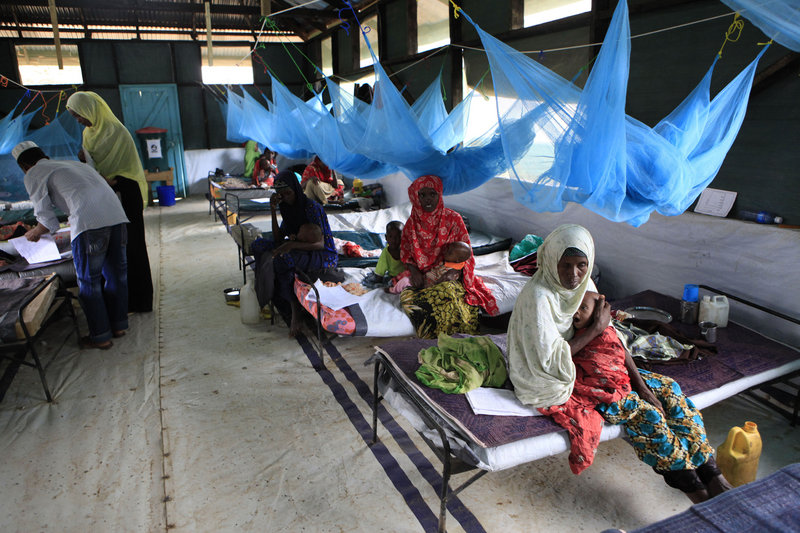NAIROBI, Kenya – Thousands of people died needlessly and millions of dollars were wasted because the international community did not respond fast enough to early signs of famine in East Africa, aid agencies said Wednesday, while warning of a new hunger crisis in West Africa.
Most rich donor nations waited until the crisis in the Horn of Africa was in full swing before donating a substantial amount of money, according to the report by aid groups Oxfam and Save the Children.
A food shortage had been predicted as early as August 2010, but most donors did not respond until famine was declared in parts of Somalia in July 2011.
The report even blamed aid agencies, saying they were too slow to scale up their response.
“We all bear responsibility for this dangerous delay that cost lives in East Africa and need to learn the lessons of the late response,” said Oxfam head Barbara Stocking.
The British government estimates that between 50,000 and 100,000 people have died from the famine, mostly Somalis. Ethiopia and Kenya were also affected but aid agencies were able to work more easily there than in war-ravaged Somalia.
More than half of those who died are believed to be children. The United Nations says 250,000 Somalis are still at risk of starvation and more than 13 million people need aid.
Among the report’s findings:
• Donors expressed concern that Ethiopia underestimated the number of people in need and found that the lack of timely, accurate information made it more difficult to provide aid. Ethiopian government figures published in February 2011 said 2.8 million people were in need, and those figures were revised two months later and again in July 2011 to 4.5 million people.
• Kenya’s food aid system carries out need assessments only twice a year, which end up being several months out of date. It added that corruption and political distractions, including a new constitution, reduced the national capacity to respond, although it said the reaction of the Kenyan public to the crisis was “substantial.”
• The situation was much worse in southern and central Somalia, where conflict and militancy prevented traditional drought responses and reduced the ability of aid groups to help.
One Kenyan economist said it would have been difficult to prevent the famine in south-central Somalia, which is mostly controlled by militants from al-Shabab, an insurgent group that has greatly limited what aid agencies can do in the region.
Governments, donors, aid groups and the U.N. need to change their approach to such disasters to help a larger number of people during the next hunger crisis, the report said.
A recent Save the Children assessment in Niger shows families in the worst-hit areas are already struggling with around one-third less food, money and fuel than is necessary to survive. Besides Niger, the other countries at risk are Mauritania, Burkina Faso, Mali and Chad, said Alun McDonald, regional spokesman for Oxfam.
Send questions/comments to the editors.



Success. Please wait for the page to reload. If the page does not reload within 5 seconds, please refresh the page.
Enter your email and password to access comments.
Hi, to comment on stories you must . This profile is in addition to your subscription and website login.
Already have a commenting profile? .
Invalid username/password.
Please check your email to confirm and complete your registration.
Only subscribers are eligible to post comments. Please subscribe or login first for digital access. Here’s why.
Use the form below to reset your password. When you've submitted your account email, we will send an email with a reset code.